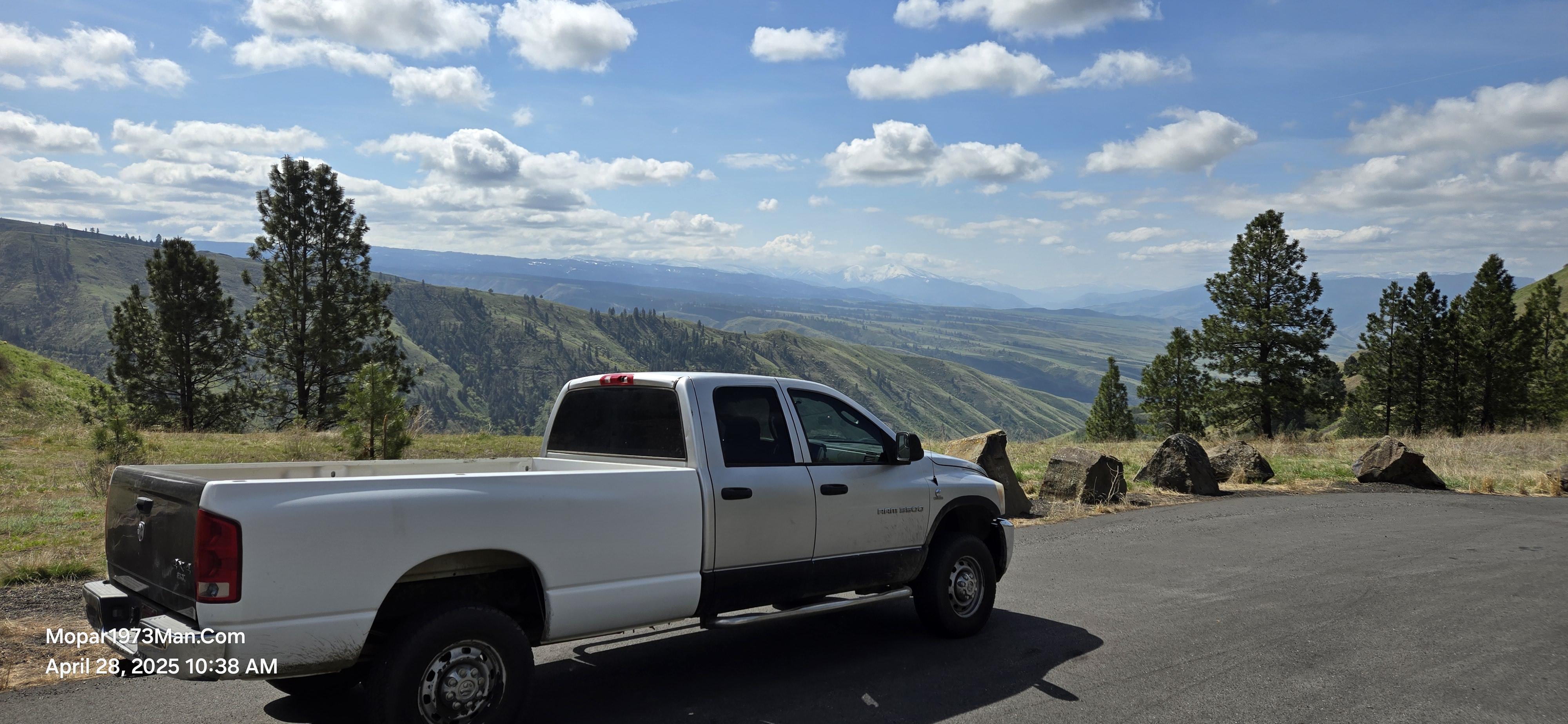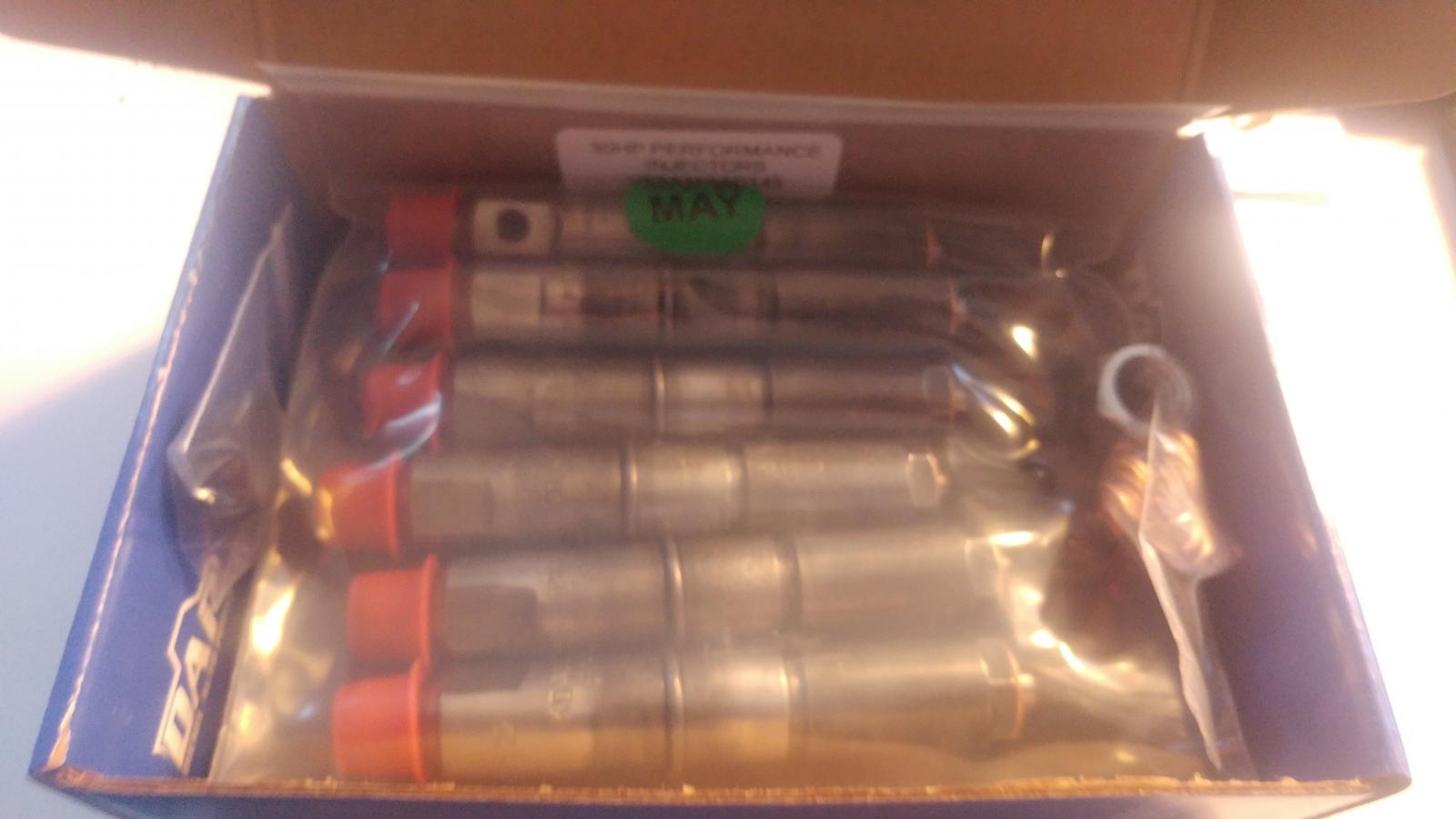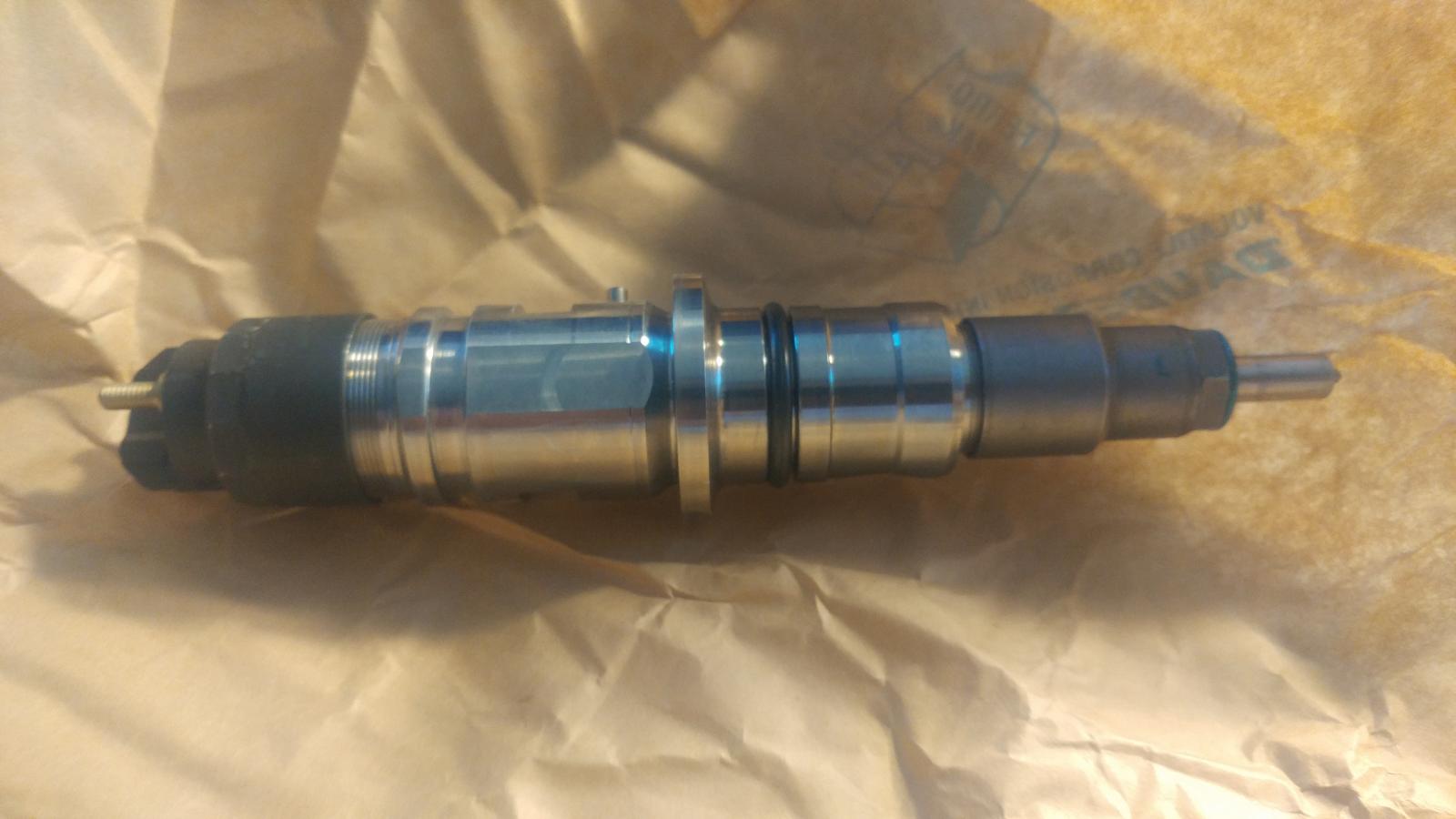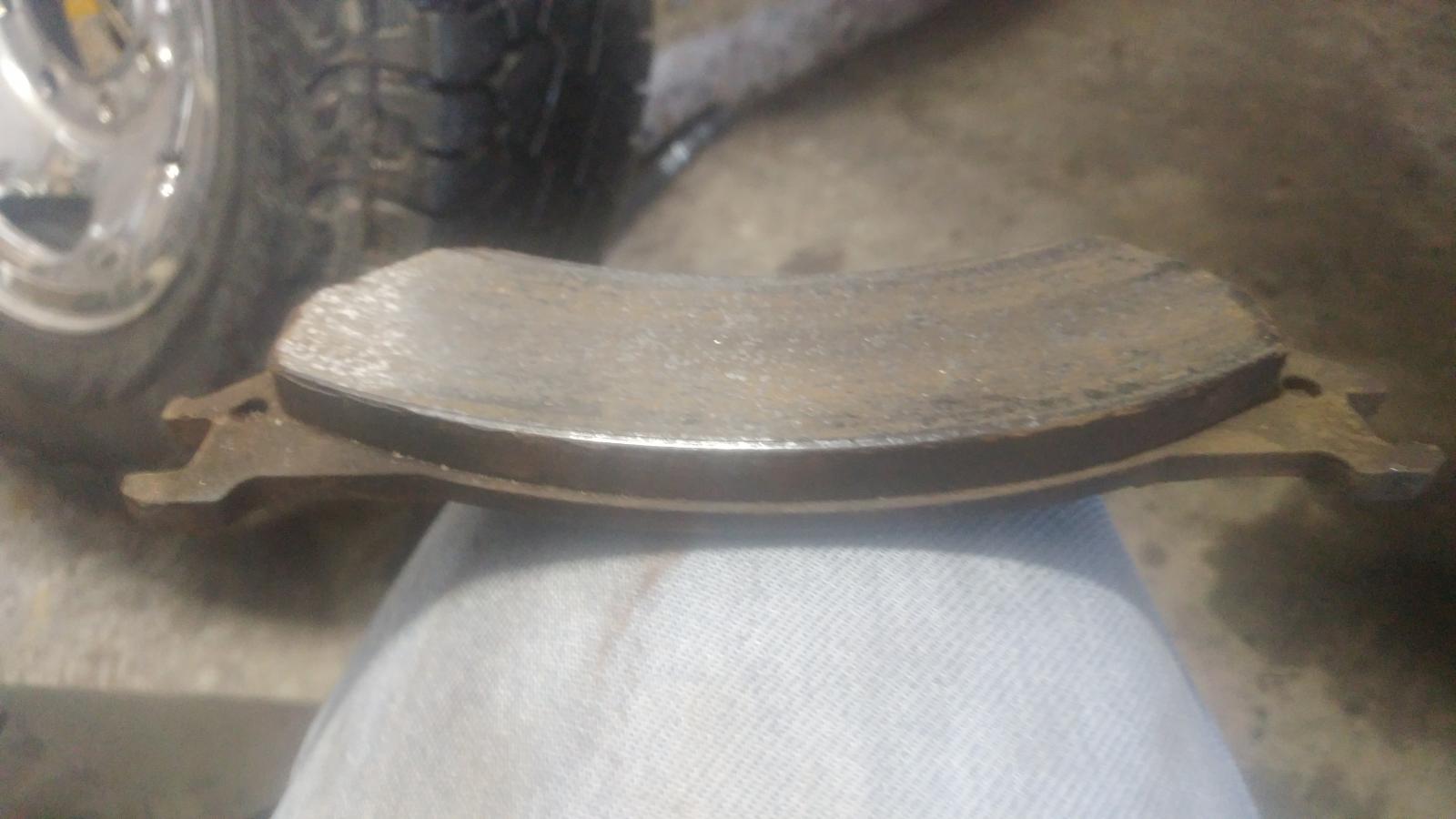
Everything posted by Mopar1973Man
-
Motor Mounts
The older these trucks get the harder and harder it is to remove pressed together parts.
-
Alignment problems
Still, I would suggest going to an alignment shop. Just that extra degree will not show up on wear patterns but might impact steering performance and increase wear speed slightly but nothing noticeable.
-
How to import / Export custom tunes in the IQuad App
All I can speak for is Android. But when I download a tune it lands in my download folder. Then I got to the iQuad app and then press the Import Button. Then go to my Download folder and select the file I wish to import. Apple products should be something similar.
-
Towing...Your Experience Is Appreciated 98.5 24V 2500
Not done yet. Waiting for parts to show. Sensor and wiring.
-
Towing...Your Experience Is Appreciated 98.5 24V 2500
Stated dry weight according to the label 6,588 pounds. As I said, no one tows an empty RV. Actual weight. This is correct. Best choice would be Quadzilla Adrenaline but requires the effort of making a good tune. Caned tuners like Smarty or Edge Comp and Edge Juice are only designed for stock trucks and not exactly a good choice for towing. Quadzilla will give the best bang for the buck but again you have to make the time to build the tune and do the testing as well. Not something you can do overnight. For either manual or automatic transmissions is a good thing. Like myself, I bought 2 sets of weld in bungs so I can have one sensor for the transmission and then the second bung will go into the rear differential. Got to use a single transmission temp gauge for both sensors on a toggle switch. Also, ISSPro EV2 gauge comes with a USB programmable warning light and programmable relay to switch on and off devices (optional). I've got my gauge set to 220°F warning light temp.
-
Towing...Your Experience Is Appreciated 98.5 24V 2500
EGT limits are like @AH64ID mentions at 1,250°F. I will warn though running that hot will make the coolant temperature rise quickly. Like your doing running 1,100°F is much easier for the engine and keep the heat down. As for the trailer forget the empty weight. Post up the GVWR that is the number that is meaningful. No one tows an empty RV. Everyone packs it with cargo, food, water, propane, etc. That number is the most important. I've also got to ask how many miles on the truck? If you have over 100k miles on the stock injectors you most likely due for replacement. Just because the truck still runs fine doesn't mean the injectors are still spraying at the proper pressure. This will make for hotter EGT's. A good tuner also helps a bunch with towing EGT's as you advance timing you EGT's will fall and the engine runs cooler and more efficient.
-
47RE In-chassis Upgrade Recommendations Wanted
@Dynamic built my 46RE for my 1996 Dodge Ram 1500. No shift kit used but custom drilled and modified the valve body and the entire transmission. As for just bolt on fixes for 47RE I don't suggest it either being valve body is only part of the puzzle and entire transmission needs upgrades to hold up to the abuse of more power.
-
Smarty s03 today :)
Without any displayed data its tough to figure out what the different setting do.
-
02 24v no start
I hate when I find wrong information. Just like the schematic for the 2002 oil pressure sensor is a single wire not a 3 wire. Then all the weird stuff we already changed the rules on like minimum fuel pressure, etc.
-
Front Brakes
I use to tow quite a bit be now it all highway empty miles back and forth to Ontario, OR. If you think that Exhaust brakes are for only towing your very much so mistaken. I use it for every stop I make. I foot doesn't touch the brake pedal till I'm down to about 20 to 25 MPH. I've been flipped off for not having any brake lights. I assure you the brake lights are there and work I just don't use the brake pedal very much. I've even been pulled over by a cop once for not having any brake lights.
-
Alignment problems
Make sure to have it realigned too.
-
Cruise Control Light
That is my first choice. ACS is a good company that will handle the job properly and most likely for less money.
-
02 24v no start
That's got to be a typo... Pin 37 on the ECM. Got to be a typo it's even showing pin 37 on the PCM.
-
02 24v no start
Be careful there is like 52 different series of software for one year of ECM.
-
02 24v no start
Wait to start should display regardless of the CCD Network as long as power is supplied to the ECM the very first instruction is the WTS light for either bulb test or fire up the grid heater. WTS is not part of the CCD network but hard-wired from the ECM to the cluster light directly. Look at the two wire maps for the Orange/Black wire. Passing thought is possibly the main fuse for the ECM and PCM being blown or fuse element cracked. Then both the ECM and PCM be without power and would not do anything.
-
Manual Lockup Switch
@Dynamic is a killer guy to work with. He does some awesome transmission work too.
-
Tire/Rim valve
Good question. I would give your local tire shop a call. I would consider a metal stem if possible that bolts to the wheel. That would be better bet for sealing and prevent leakage. As for standard pull thru stems, I'm not sure what the size of the rim hole has to be.
-
Free time?
FedEx mail came today... 5 x 0.011 +30 HP 1st Gen injectors... Then the new replacement 4th gen injector. The funny part is that single 4th Gen injector cost as much as the entire 6 injectors for the 1st Gen. Just about finish the 2nd Gen with its repairs. Talked to the owner and doing more work. Thank you! @dieselautopower For handling the injector testing on the 4th Gen injectors and sending me the new set of 1st Gen injectors.
-
Front Brakes
Head gasket is done... What's another fist full of money eh?
-
47RE In-chassis Upgrade Recommendations Wanted
Done. Covered. You are up and listed.
-
Front Brakes
If you do... Look at the PacBrake PRXB. That is the best exhaust you can most likely get your hands on. The standard PacBrake isn't bad but the PRXB has a second butterfly that hold back better down low RPM's giving better braking.
-
47RE In-chassis Upgrade Recommendations Wanted
That is why the Downloads are member thing. That way they are not displayed to Google or the public but the membership pool here can glean the information needed to repair their trucks. I see it as an educational purpose.
-
Front Brakes
Doubtful. When you can catch my pad life (200k plus) really doubt bigger is always better. I would suggest Exhaust Brake over 3rd Gen brakes any day.
-
Front Brakes
Just a month ago I pulled the caliper. I'm running the cheapest pads I could my hands on. I'm well over 200k miles on this set and still going. I've just replaced my rear rotors not too long ago not because of the rotor was bad but the top hat part for the parking brake. Grooved too bad for the parking shoes to grab the drum. Rotors where still in excellent condition.
-
02 24v no start
Driver side of the block just below the stock fuel filter housing. 2 bolts, one Allen screw holding the plug in. I would highly suggest to send the ECM to Auto Computer Specialist and they will test and tell you what is wrong with the ECM. Then repair what is needed. Double check the OBDII plug you could have a pin pushed out. I've had this happen with a Smarty Tuner.








